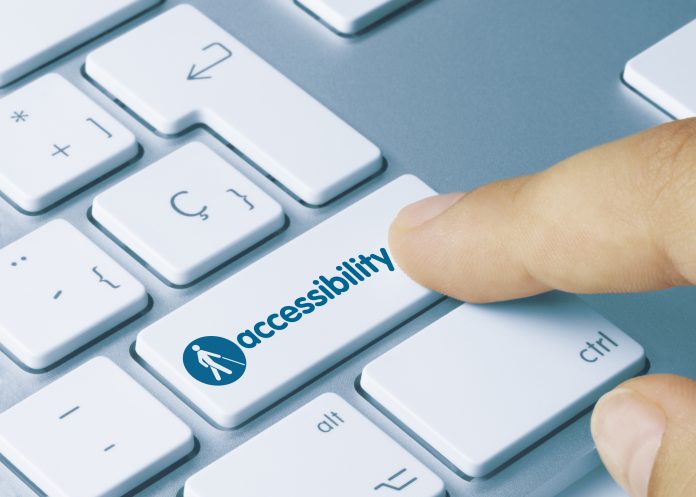Fiona McParland, Publishing Manager, APS Group, highlights 5 steps that public sector organisations should consider when making information accessible
Public sector organisations have an obligation to communicate clearly with all citizens. With so much now being communicated online though, the public sector is being asked to ensure everyone can easily access and understand the information on its websites and apps.
The issue of accessibility and inclusivity will be brought into sharper focus in the coming weeks due to new accessibility regulations coming into force on the 23rd September. This will require public sector websites and apps to meet specific standards that will allow all citizens to easily access services and information coming from governmental bodies.
But, while the deadline to become compliant provides a short-term goal, I want us to view this as a stop on the journey and not the destination. Public sector organisations should be creating a long-term publishing strategy that facilitates a ‘culture of accessibility’ where everyone is encouraged and enabled to think about inclusively from the outset.
Here are my five steps to help public sector authors navigate upcoming legislation and deliver content that is both accessible and inclusive:
Context
Before embarking on any piece of content, public sector organisations should first ask: ‘what’s the reason for publishing?’ I often see content being churned out without the purpose for doing so being first identified. If this is the case, the information is unlikely to resonate with the intended audience. While every organisation will have different aims, it’s important to be clear on what that particular document or content piece is trying to achieve. Is it a statistical piece that aims to report on a current issue? Or, perhaps, it’s to communicate a new policy that aims to suggest something new to the user?
Conception
We need to consider the best way to get the message across. This means thinking about the purpose and audience in relation to document type, whether for print or digital, as well as focusing on style and structure at the beginning of the publishing process. All too often a Word document is created by an author and then given some design treatment, or an inappropriate template is used. Sometimes even PowerPoint!
The thinking process needs to be creative in the communication while also adhering not only to the ‘Regulations’, but to the needs of others.
Content
Take a closer look at how content is being structured, designed and delivered in order to meet the audience’s needs. While cost and timescales are key considerations, it’s important to explore how content can be created so that it is easily adapted into (and between) different formats so people don’t need to request a ‘special’ version.
Whether the audience’s requirements are a result of physical, cognitive, visual or other impairment, there are at least 6 different core options that should be considered including HTML, Braille, large format, easy read, British Sign Language and video captioning. There may also be a need for translation into other languages and delivering that digitally. Not all languages read left to right for example.
Beyond format, we also need to think about how we use things like language, colour and font. For example, users who have low or blurred vision may be affected by text colour that doesn’t contrast well with the background. In this case, the contrast ratio needs to be at least 4.5:1 for body text and 3:1 for large text.
Other small things like ensuring text is left-aligned can be important as justified text can result in uneven spacing between words, making it harder to read.
From having a minimum font size to using simple language, organisations can create a definitive list of audience needs.
Communication
How can public sector organisations let people know that new information exists, and what channels can best be used to communicate this? This is an important area which needs to be considered carefully.
Recent news about coronavirus lockdown restrictions being enacted in Greater Manchester was announced by the Health Secretary on Twitter. Twitter can, of course, be an effective additional channel, but should it be the main source of public sector information? While it’s a hugely popular platform, it isn’t used by everyone – meaning there was a risk the message would not reach everyone it was intended for.
Additionally, Twitter is not a place where you can easily check or revisit the content, so it is important to have another home for this content, such as a well-structured and navigable website which uses clear language and effective writing.
Curation
Once a document has been published, organisations should consider how that document (or series of documents) is maintained. A good first step is to implement an archiving policy that provides the public with a record of what happened when what the implications were, and what followed. This might be as simple as communicating when a revised edition is due, as well as where/how it can be accessed. For example, in local and national UK libraries as well as online.
By thinking through these five steps, the public sector can begin to work towards publishing information in an as inclusive and accessible way as possible – creating a mindset that does not need changing regulations to achieve fairness and one which ensures that everyone can receive information in a way that meets their needs.




![Europe’s housing crisis: A fundamental social right under pressure Run-down appartment building in southeast Europe set before a moody evening sky. High dynamic range photo. Please see my related collections... [url=search/lightbox/7431206][img]http://i161.photobucket.com/albums/t218/dave9296/Lightbox_Vetta.jpg[/img][/url]](https://www.openaccessgovernment.org/wp-content/uploads/2025/04/iStock-108309610-218x150.jpg)






